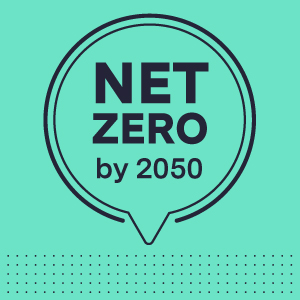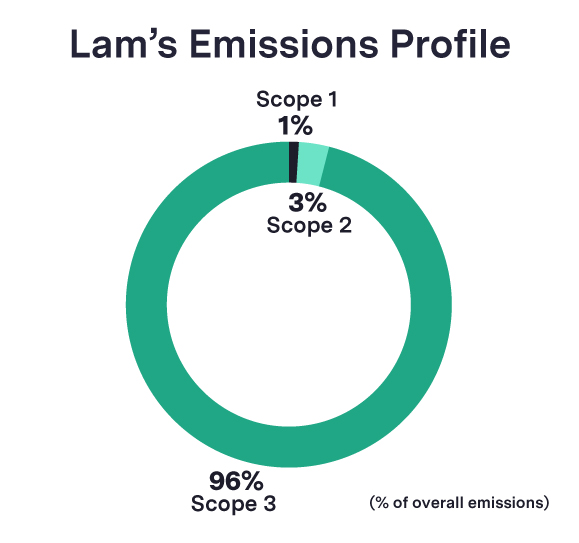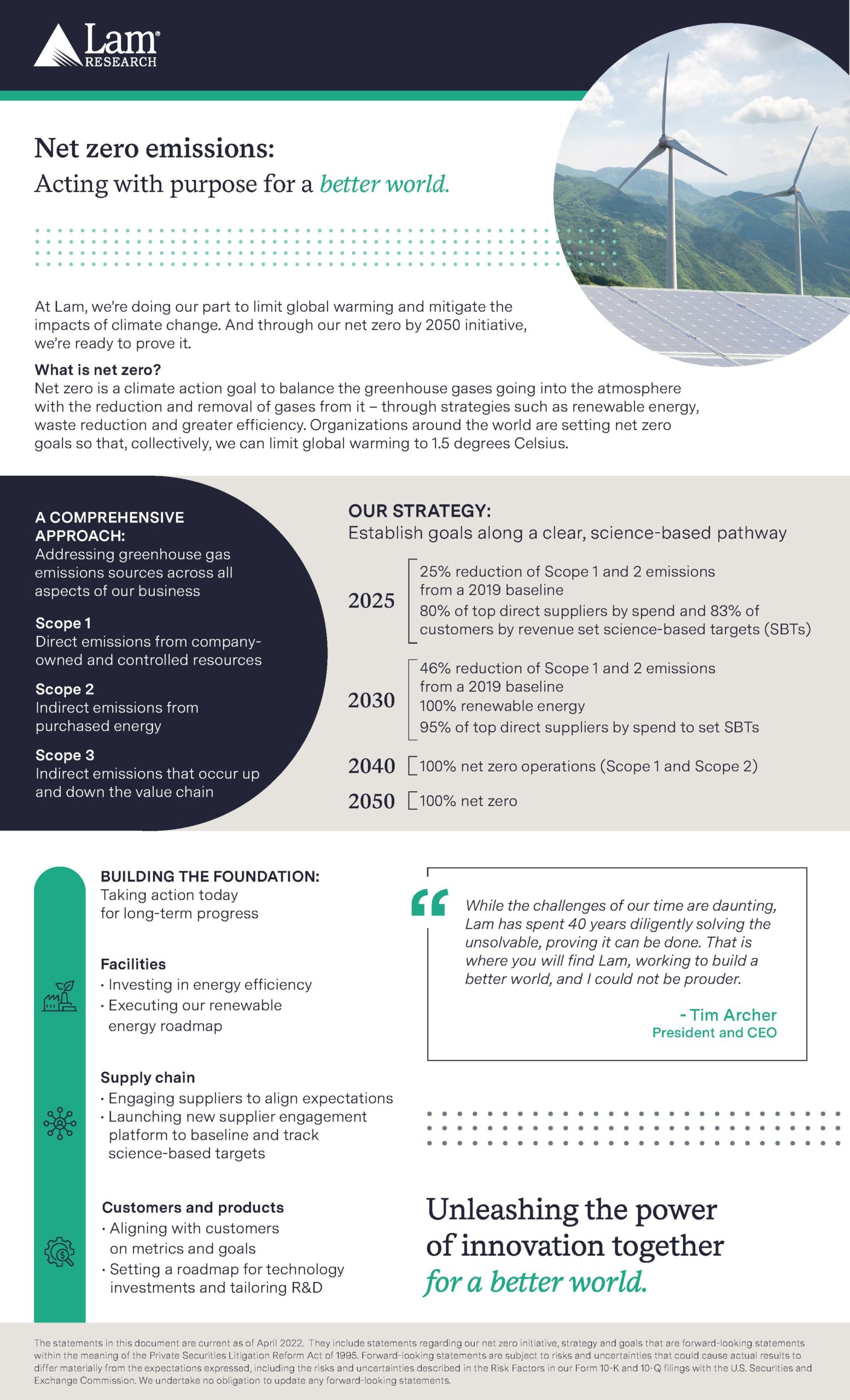
Today, we are confronting what is perhaps the most pressing challenge of our time – climate change. We are seeing its effects globally, with rising sea levels, wildfires, droughts and flooding impacting our environment, business and social health and resiliency around the world. According to NASA, the planet’s temperature has already risen by 1.1°C above pre-industrial levels and if temperatures continue to rise above 1.5°C, the effects will be catastrophic.
At Lam, we are committed to doing our part to curb emissions and protect our planet. Last year, we announced our most ambitious sustainability goal to date: to be net zero by 2050. Today, on Earth Day, we are proud to announce our plan for how to get there.
What’s driving our carbon footprint
Over the past 50 years, the primary driver of rising global temperatures has been a variety of greenhouse gas emissions like carbon dioxide, methane, and others. The scientific community classifies greenhouse gas emissions into three categories or scopes:
- Scope 1 emissions are the direct emissions from company-owned and controlled resources like office buildings, manufacturing facilities, labs and vehicles.
- Scope 2 emissions are the indirect emissions from purchased energy that we use to power, heat, and cool our buildings.
- Scope 3 emissions are indirect emissions that occur up and down the value chain. Activities like business travel, employee commuting and waste, as well as the full lifecycle of our products, fall into this category.
Lam’s net zero goal involves eliminating or offsetting all the greenhouse gas emissions across our entire operational footprint. Based on our 2019 emissions inventory, scope 1 and 2 account for 4% of our overall emissions profile. The remaining 96% of the company’s greenhouse gas emissions are classified as scope 3. Our supply chain and the use of our products account for the majority of our emissions in this category.

Science-based targets are core to our strategy
Over the next few decades, Lam intends to undertake an ambitious and important effort to ensure that we are executing on a clearly defined strategy to reduce emissions in line with climate science. To support this effort, we have established science-based targets and submitted them for validation this year with the Science Based Targets initiative.
The Science Based Targets initiative (SBTi) is a standards body that has established a framework for setting climate targets that align with the latest science to support credibility and transparency across companies.
Reaching net zero emissions means collaboration across our ecosystem
Getting to net zero emissions will require the close partnership and collaboration of our sustainability teams, suppliers, customers, and logistics providers. Together, we endeavor to reach the following milestones on our way to the target goal of net zero emissions by 2050:
- By 2025: we aim to reduce our scope 1 and 2 emissions by 25% from our 2019 baseline. Additionally, our goal is to see 80% of our top suppliers by spend and 83% of our customers by revenue set science-based targets.
- By 2030: over the next ten years, we aim to shift to operating on 100% renewable energy by installing solar panels at select sites and employing market-based instruments such as power purchase agreements. We also intend to look at ways to increase our energy efficiency, including by installing and designing energy-efficient equipment and facilities as we grow. Across our operations, we plan to explore fuel switching and greenhouse gas abatement to further reduce our scope 1 and 2 emissions, and we aim to offset the remainder. By 2030, our aim is that 95% of our top direct suppliers by spend will have set science-based targets.
- By 2040: we aim to reach net zero within the footprint of our global corporate operations by reducing the majority of our scope 1 and 2 emissions and offsetting the remainder.
- By 2050: we plan to be net zero, by maintaining the full reduction of our scope 1 and 2 operational emissions and reducing the majority of our emissions across our entire value chain. For scope 3 emissions for which reduction isn’t practicable, we plan to purchase offsets that reduce an equivalent amount of emissions.
With this science-based roadmap now in place, we are ramping up our teams and resources to execute on our plans in the coming years, prioritizing three key areas:
- Facilities: We plan to further invest in energy efficiency with a goal to achieve 2 million kilowatt-hours in energy savings. For comparison, the energy saved would be equivalent to providing one full standard 40 kWh battery charge for 50,000 Nissan LEAF electric cars. We also plan to expand the solar energy we use by installing a solar array at our newest manufacturing site in Malaysia and to continue to evaluate all our domestic sites for solar opportunities.
- Suppliers: Our supply chain plays a significant role in our scope 3 emissions and in the next year, we plan to continue to engage with our suppliers and set expectations for what’s to come. We have also invested in a new supplier engagement platform to better understand our suppliers’ emissions and identify opportunities to work together to collectively reduce these emissions.
- Products: Our product groups are evaluating our product emissions baseline and developing a technical roadmap that is in line with our customers’ sustainability goals and our net zero target.
Our roadmap to net zero is ambitious, but together with our global teams, we plan to prove it can be done in the coming decades. I encourage you to visit our ESG site to learn more.

Editor’s note: This post was updated in June 2022.
This article contains forward-looking statements within the meaning of the Private Securities Litigation Reform Act of 1995. Forward-looking statements include any statements that are not statements of historical fact, including statements regarding our carbon emissions, energy efficiency and net zero plans and goals. Forward-looking statements are subject to risks and uncertainties that could cause actual results to differ materially from the expectations expressed, including the risks and uncertainties described in our filings with the U.S. Securities and Exchange Commission, including specifically the Risk Factors described in our annual report on Form 10-K. You should not place undue reliance on forward-looking statements. We undertake no obligation to update any forward-looking statements.